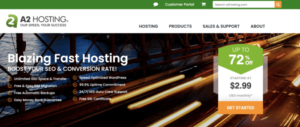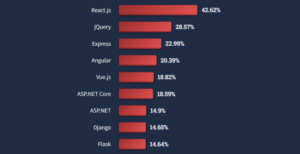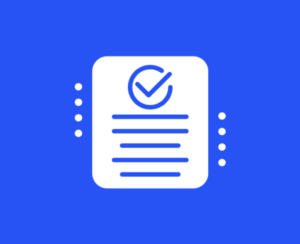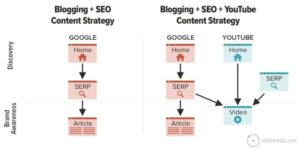
As Google Ads campaign optimization takes center stage, marketers are constantly seeking ways to refine their strategies for maximum impact. This process not only involves understanding the core components of a successful campaign but also requires a keen eye for data-driven decisions. By harnessing the power of targeting, audience segmentation, and effective selection, businesses can unlock the full potential of their advertising efforts.
Delving deeper, optimization techniques such as A/B testing and bid adjustments play pivotal roles in enhancing ad performance. Coupling these strategies with integrated marketing efforts, including social media and video content, creates a more cohesive and engaging experience for audiences. Together, these elements form a robust framework for anyone looking to elevate their Google Ads initiatives.
Google Ads Campaign Fundamentals

Understanding the fundamentals of a Google Ads campaign is essential for optimizing your advertising efforts. A successful campaign hinges on several key components, including effective targeting, audience segmentation, selection, and the right choice of ad formats. Each of these elements plays a critical role in ensuring that your ads reach the right people at the right time, maximizing ROI and overall performance.
Key Components of a Successful Google Ads Campaign
To build a successful Google Ads campaign, it’s important to focus on several key components that contribute to effective ad performance. These elements include:
- Campaign Goals: Clearly defined objectives help determine your campaign’s direction, whether it’s brand awareness, lead generation, or sales.
- Budgeting: Allocating an appropriate budget ensures that you can compete for ad placements effectively while managing costs.
- Ad Copy and Creative: Engaging and relevant ad copy, along with compelling visuals, capture attention and encourage clicks.
Importance of Targeting and Audience Segmentation
Effective targeting and audience segmentation are crucial in maximizing your Google Ads campaign’s reach and efficiency. By understanding your target audience’s demographics, interests, and behaviors, you can tailor your ads to resonate more with them. This approach not only increases the likelihood of conversion but also improves your Quality Score, leading to lower costs per click.
- Demographic Targeting: Focus on age, gender, and geographic location to reach the most relevant audience.
- Interest-based Targeting: Utilize interest categories to connect with users who are more likely to engage with your ads.
- Remarketing Strategies: Re-engage users who have previously interacted with your website or ads, enhancing conversion potential.
Selecting the Right s and Ad Formats
Selecting appropriate s and ad formats can significantly affect the performance of your Google Ads campaign. s should be relevant to your business and aligned with what your potential customers are searching for.
- Research Tools: Utilize tools such as Google Planner to identify high-performing s that match your target audience’s search intent.
- Match Types: Implement different match types (broad, phrase, exact) to control who sees your ads, increasing the relevance of your ad placements.
- Ad Formats: Choose from various ad formats, including text ads, display ads, and video ads, depending on your objectives and target audience preferences.
“The right s paired with the ideal ad formats can significantly elevate your Google Ads performance, ensuring you reach your goals efficiently.”
Optimization Techniques for Google Ads

Optimizing your Google Ads campaigns is crucial for maximizing your return on investment. By employing various strategies, you can enhance your ad performance, ensuring that every dollar spent works harder for your business. This section explores key techniques that can lead to more effective Google Ads management.
A/B Testing and Experimentation
A/B testing, also known as split testing, allows advertisers to compare two versions of an ad to determine which one performs better. This method can significantly enhance ad performance by providing data-driven insights. Implementing A/B tests involves several steps:
- Define Your Objective: Determine what you want to test, such as headlines, images, or calls to action.
- Segment Your Audience: Ensure that the audience receiving each ad variant is similar to avoid skewed results.
- Run the Test: Launch both ad versions simultaneously to capture real-time data.
- Analyze Results: Use Google Ads reporting tools to measure key metrics, such as click-through rates (CTR) and conversion rates.
- Implement Changes: Adopt the winning ad version and continue testing other variables for ongoing improvement.
“Testing is the heart of effective ad optimization; it allows you to make informed decisions based on performance data.”
Adjusting Bids and Budgets
Adjusting bids and budgets based on campaign performance can yield significant benefits in efficiency and effectiveness. Regular evaluation of your campaign results enables you to allocate resources more strategically.Key strategies for adjusting bids and budgets include:
- Focus on High-Performing s: Increase bids for s that generate higher conversion rates and lower cost per acquisition.
- Decrease Bids for Underperforming s: Scale back on s that are not delivering satisfactory results to free up budget for better-performing ones.
- Utilize Automated Bidding Strategies: Implement smart bidding options like Target CPA or Target ROAS, which use machine learning to optimize bids in real-time.
- Reallocate Budget Seasonally: Adjust your budget based on seasonal trends and peaks in user search behavior relevant to your industry.
“Effective budget management ensures that every dollar works towards maximizing your campaign’s potential.”
The Role of Ad Extensions
Ad extensions are vital tools that enhance the visibility and effectiveness of your Google Ads. These additional pieces of information provide potential customers with more reasons to click.Utilizing various types of ad extensions can significantly improve click-through rates:
- Sitelink Extensions: Direct users to specific pages on your website, enhancing navigation and engagement.
- Call Extensions: Allow users to call your business directly from the ad, which is particularly effective for mobile users.
- Location Extensions: Show your business address, helping users find your physical location easily.
- Structured Snippet Extensions: Highlight specific aspects of your products or services, providing additional context to potential customers.
- Price Extensions: Showcase your products or services along with their prices, making it easier for users to make informed decisions.
“Ad extensions not only improve visibility but also provide valuable information that can lead to higher engagement and conversions.”
Integrating Google Ads with Other Marketing Strategies
Integrating Google Ads with other marketing strategies can significantly enhance the effectiveness of your campaigns. By aligning your advertising efforts with various digital marketing channels, you can create a comprehensive approach that maximizes visibility, engagement, and conversions. This synergy not only helps in reaching a wider audience but also ensures your messaging is consistent across all platforms.
Aligning Google Ads with Search Engine Marketing Efforts
To create a seamless integration between Google Ads and Search Engine Marketing (SEM), it is essential to establish a strategy that leverages both organic and paid search efforts. The following steps can help in aligning these two components:
- Conduct research to identify terms that drive traffic both organically and through paid search. This prevents overlap and optimizes budget allocation.
- Utilize data from Google Ads to inform your strategy. High-performing ad s should be prioritized in your organic content strategy.
- Set up conversion tracking to analyze which search queries lead to successful conversions, allowing for better-informed bidding strategies and content creation.
Benefits of Combining Google Ads with Social Media Marketing
Combining Google Ads with social media marketing leads to a multifaceted approach that can enhance brand visibility and engagement. Some of the key benefits of this integration include:
Increased Reach
Social media platforms have vast user bases, allowing you to extend the reach of your Google Ads campaigns to a larger audience.
Improved Targeting
Utilize the detailed targeting options available on social platforms to retarget users who have interacted with your Google Ads, increasing conversion opportunities.
Content Repurposing
Repurpose your successful ad creatives and campaigns for social media, ensuring consistency in messaging while maximizing content use.
Cohesive Strategy Incorporating Video Marketing and Google Ads
Incorporating video marketing into your Google Ads strategy can lead to enhanced engagement and improved conversion rates. A cohesive strategy includes the following elements:
- Develop engaging video ads that highlight product features, customer testimonials, or brand stories, and ensure they are optimized for both YouTube and the Google Display Network.
- Use remarketing lists to target users who have previously engaged with your video content, encouraging them to revisit your product or service.
- Analyze engagement metrics from video ads to refine your target audience and improve future campaigns. For instance, if a particular video drives high engagement but low conversions, consider adjusting your call-to-action or landing page.
“Combining Google Ads with other marketing strategies creates a more powerful and cohesive brand presence, improving customer engagement and conversion.”
Closing Notes
In summary, mastering Google Ads campaign optimization is an ongoing journey that requires adaptation and learning. By focusing on key strategies and integrating various marketing channels, businesses can achieve not only improved click-through rates but also a stronger connection with their target audience. As you embark on your optimization journey, remember that continuous testing and refinement will always yield the best results.
Common Queries
What is the importance of selection?
selection is crucial as it determines how relevant your ads are to users’ search queries, directly impacting visibility and click-through rates.
How often should I optimize my Google Ads campaigns?
Regular optimization is recommended, typically every few weeks, to ensure you’re adapting to changes in performance and market conditions.
What is A/B testing in Google Ads?
A/B testing involves running two or more variations of ads to determine which performs better, helping you make data-driven decisions for future campaigns.
How do ad extensions improve click-through rates?
Ad extensions provide additional information and options, making your ad more informative and appealing, which can lead to higher click-through rates.
Can I integrate Google Ads with social media marketing?
Yes, integrating Google Ads with social media marketing can enhance your overall strategy by reaching a broader audience and promoting consistent messaging.





